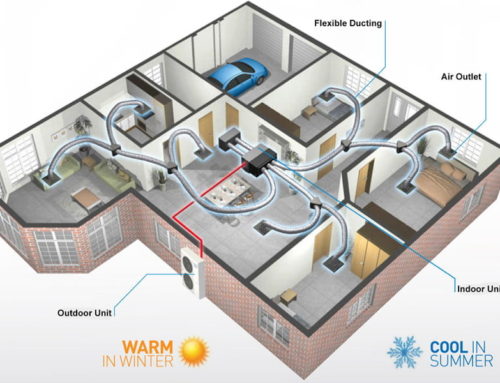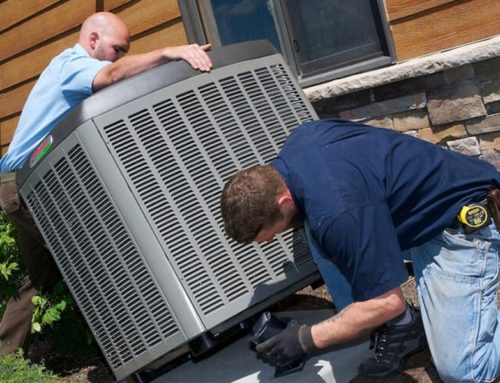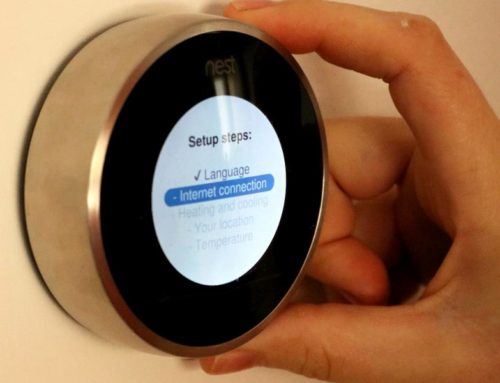Essentially, a heat pump is a VCRS which can be utilized to raise or lower the temperature in any given space. The process of setting that kind of unit could be split into 2 different sections: interior unit called an air-handling unit and an outside unit called a heat pump, which is entirely analogous to a central A/C one. A condenser distributes coolant which takes in and releases warm air while it moves among the interior and outside units.
How Does It Work?
In our opinion, it’s easier to compare a heat pump to a «carrier» of sorts. Its main function is transferring hot air back and forth, depending on where it’s needed. Even in cool air, there’s enough thermal energy within it. In winter, while it’s chilly outside, a heat pump «pulls in» this out-of-doors warmness and carries it indoors. In the summertime, whilst it is hot outside, this unit operates in a way which is analogous to an A/C unit – it takes away excessive hotness from your household.
Kinds of Heat Pumps
There exist four distinct kinds of heat pumps. Here’s a brief rundown of them:
- Absorption heat pump
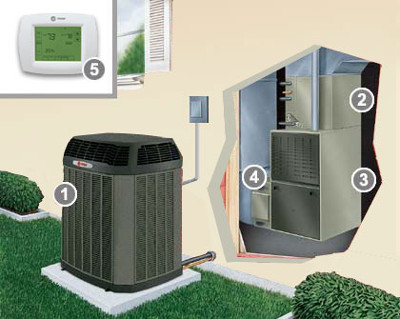 These types are, in essence, air-sourced pumps powered not by a current, but by a singular source of heat. Due to carbon-dioxide being the most popular source of heat for this kind of unit, they’re frequently called gas absorption units. There also exist gas-powered chillers, utilizing the identical mechanism. Dissimilarly, those aren’t multifunctional and can’t raise the air temperature.
These types are, in essence, air-sourced pumps powered not by a current, but by a singular source of heat. Due to carbon-dioxide being the most popular source of heat for this kind of unit, they’re frequently called gas absorption units. There also exist gas-powered chillers, utilizing the identical mechanism. Dissimilarly, those aren’t multifunctional and can’t raise the air temperature.
- Air source heat pump (ASHP)
If correctly set up, ASHP units can deliver 1.5 to 3 times more thermal energy to a household when compared to the electricity it consumes. ASHP units are considered to be among the most cost-effective solutions you can purchase online.
- Ground-sourced heat pump (GSHP)
GSHP units are earth-coupled, ground-to-air or water-to-air pumps. People used those for close to 80 years now. Those utilize the unchanging temperature of the earth as the exchanger. Obviously, main principle here is vastly different when compared to air-to-air heaters.
- Mini-split heat pumps
These types make amazing retrofit additions to households with ductless heating systems. Those could also be a great pick for living space add-ons where lengthening or fitting ducts is not possible, and very effective new houses that need only a small space HVAC unit.
Obviously, we’re barely scratching the surface here because every single type here can be split into sub-categories. For brevity’s sake, let’s not go into details here.
Heat Pump Advantages
There are multiple advantages to owning a heat pump. Take a look at the list below to read about some of them.
- Energy Proficiency
Due to its own very nature, a heat pump is more efficient. As opposed to producing heat, it merely moves it around. One more thing to note is that the pumps are all powered by electrical current, so there’s a chance for you to substantially lower the amount of fuel consumed.
- It’s Perfect for Moderate Climates
Fact of the matter is the following — there are simply NOT enough HVAC solutions for moderate climates. Heat pumps necessitate no additional heating sources when used in moderate climates.
- It’s Also Perfect for Harsher Climates
A «harsher» climate, in our opinion, is the one with temperatures that dip below — 16C. Even though a heat pump can easily extract some thermal resources even from the coldest air, there exists a more comfortable solution – using it in conjuncture with your heating unit.
- Cheap Price
We’re talking about both short- and long-term savings! You will spend less money purchasing a heat pump when compared to the values of the more intricate HVAC systems. Along with that, as mentioned above (#1), you’re guaranteed to cut costs in the long run.
Important Information Prior to Buying a Heat Pump
There exist various different details you have got to stay on top of whilst you’re in the market for a heat pump. Strictly speaking, two of the most important criteria are the seasonal energy efficiency Ratio and heating seasonal performance factor.
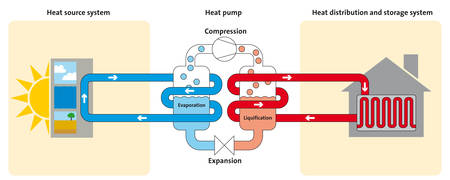 As far as seasonal energy efficiency Ratio goes, you have to be looking at units that have ratings between 15 and 19. These sorts of pumps are among the most cost-effective and energy-saving one could possibly hope for. So, when talking about heating seasonal performance factor – you have got to look for pumps with ratings between 7 and 11.
As far as seasonal energy efficiency Ratio goes, you have to be looking at units that have ratings between 15 and 19. These sorts of pumps are among the most cost-effective and energy-saving one could possibly hope for. So, when talking about heating seasonal performance factor – you have got to look for pumps with ratings between 7 and 11.
In order to give you a better idea of what to expect while searching for a suitable heater pump, let’s take a quick look at some popular additional functions:
- Desuperheating coils. They help the unit work in a more effective way by recycling unused thermal energy.
- Special twin-rotary compressors and motors. They help cut down the waste of power by «scaling» up/down in accordance with the required warming/chilling level.
- Spiral vacuum pump. They are a soundless, more effective and longer-lasting alternative to conventional condensers.
Despite the fact buying a pricey pump is not something everyone can afford, they do give you great value for your money by helping a unit work in a more effective way – saving energy during its lifecycle.
Heat Pump Upkeep
- As you know, maintenance is among the most important things. Here’s a brief selection of the best heat pump maintenance techniques:
- Replace filter. You should do it either once per month (if you’re using it frequently) or every four months (if you aren’t using it every day).
- Keep it clean. Try to keep fans/coils clean and free from rubbish.
- Get a specialist to examine it. Every three years, you have to find a qualified technician to look at your heating unit to determine whether it’s working to its full potential.




